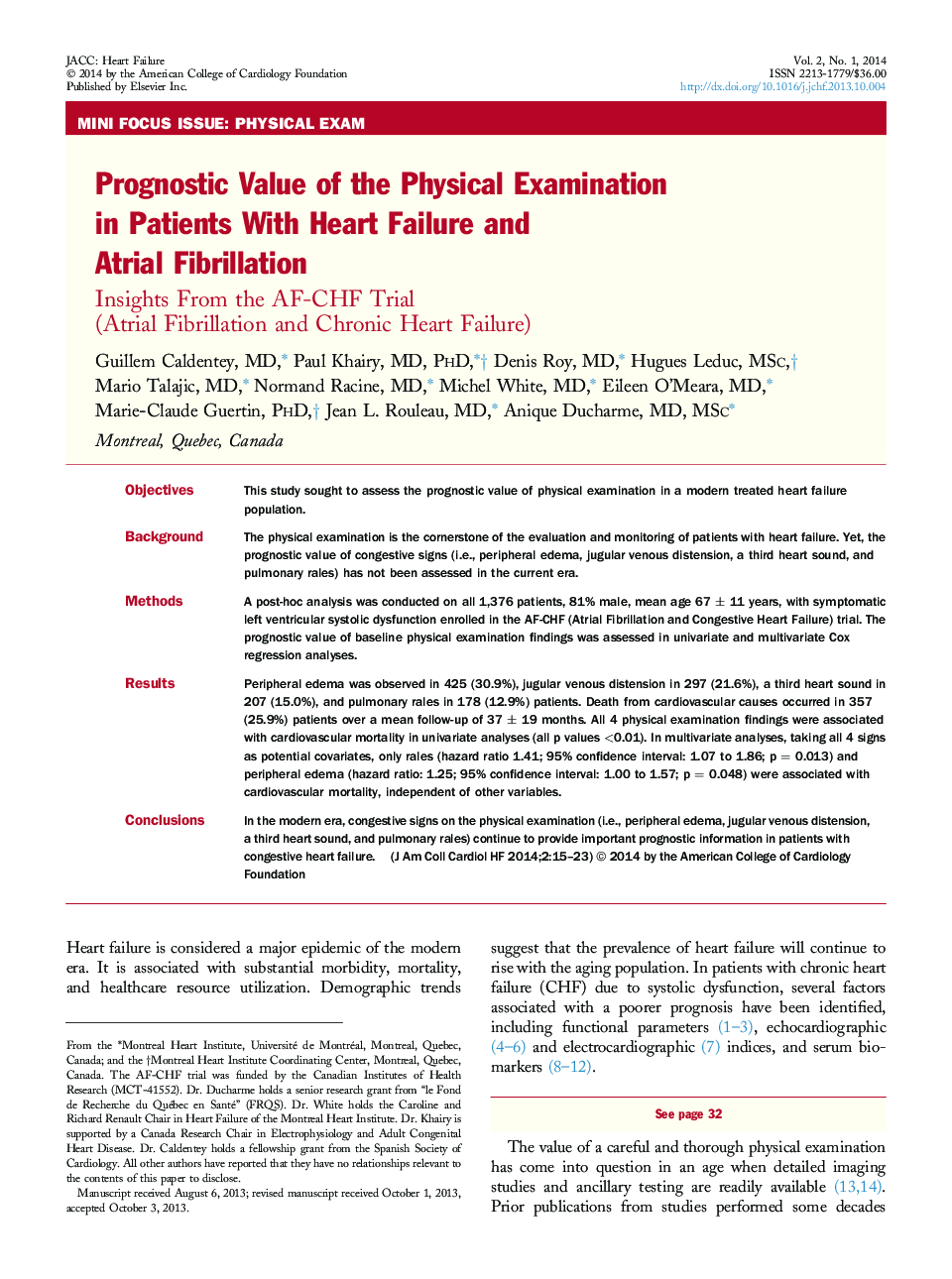| Article ID | Journal | Published Year | Pages | File Type |
|---|---|---|---|---|
| 2942519 | JACC: Heart Failure | 2014 | 9 Pages |
ObjectivesThis study sought to assess the prognostic value of physical examination in a modern treated heart failure population.BackgroundThe physical examination is the cornerstone of the evaluation and monitoring of patients with heart failure. Yet, the prognostic value of congestive signs (i.e., peripheral edema, jugular venous distension, a third heart sound, and pulmonary rales) has not been assessed in the current era.MethodsA post-hoc analysis was conducted on all 1,376 patients, 81% male, mean age 67 ± 11 years, with symptomatic left ventricular systolic dysfunction enrolled in the AF-CHF (Atrial Fibrillation and Congestive Heart Failure) trial. The prognostic value of baseline physical examination findings was assessed in univariate and multivariate Cox regression analyses.ResultsPeripheral edema was observed in 425 (30.9%), jugular venous distension in 297 (21.6%), a third heart sound in 207 (15.0%), and pulmonary rales in 178 (12.9%) patients. Death from cardiovascular causes occurred in 357 (25.9%) patients over a mean follow-up of 37 ± 19 months. All 4 physical examination findings were associated with cardiovascular mortality in univariate analyses (all p values <0.01). In multivariate analyses, taking all 4 signs as potential covariates, only rales (hazard ratio 1.41; 95% confidence interval: 1.07 to 1.86; p = 0.013) and peripheral edema (hazard ratio: 1.25; 95% confidence interval: 1.00 to 1.57; p = 0.048) were associated with cardiovascular mortality, independent of other variables.ConclusionsIn the modern era, congestive signs on the physical examination (i.e., peripheral edema, jugular venous distension, a third heart sound, and pulmonary rales) continue to provide important prognostic information in patients with congestive heart failure.
